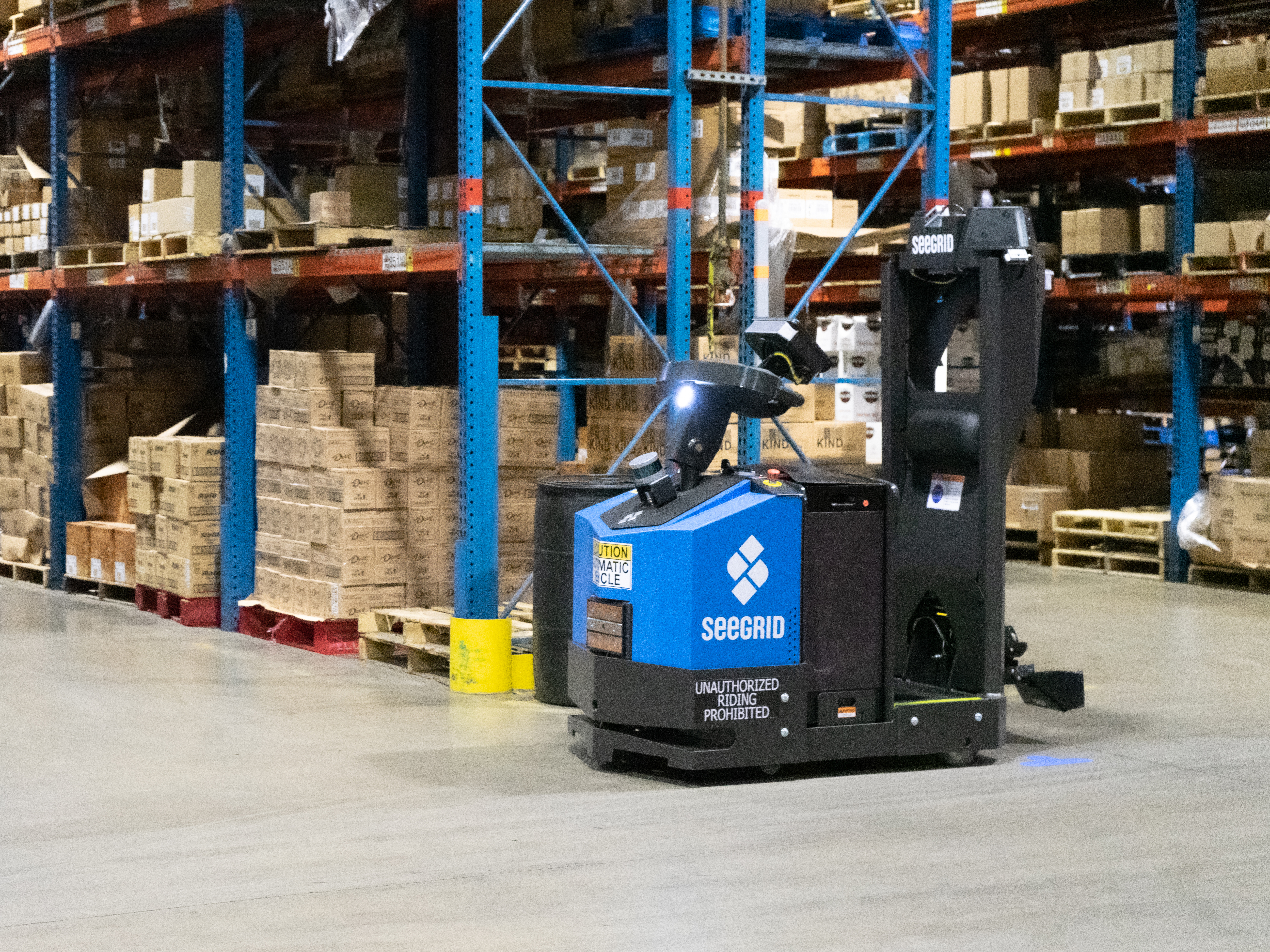
Visit Our Sponsors |
|
|
|
|
|
|
|
|
|
|
|
|
|
|
|
|
|
|
|
|
|
|
|
|
|
|
|
|
|
|
|
|
|
|
|
|
|
|
|
|
|
|
|
|
|
|
|
|
|
|
|
|
|
|
|
|
|
|
|
|
|
|
|
|
|
|

Mobile robots are carving out an increasingly important role in material handling, especially in the era of e-commerce and the coronavirus pandemic. In this conversation with SupplyChainBrain Editor-in-Chief Bob Bowman, Jeff Christensen, vice president of product with Seegrid Corp., explains how the technology is evolving, and what impact it will have on the role of human workers in distribution centers in the coming year and beyond.
SCB: What are the big developments in material-handling automation that you expect to see in 2021?
Christensen: There's a really interesting confluence of technologies that’s raising the maturity level of mobile automation in ways we haven't seen in years past. Specifically, it’s a greater sense of awareness on the part of robots. All of these machines are driving material around — they have a much more sophisticated, human-like sense of three-dimensional space, which allows them to operate more reliably and safely around employees, and do more tasks. The technology is increasing rapidly, and that's going to drive more adoption.
SCB: What are some of the factors that are driving the industry toward greater automation?
Christensen: Even before the pandemic, manufacturing had been experiencing increasing pressure for customization, because consumer preferences have become pickier over time. If you went to an automotive plant 20 years ago, it was all the same make and model, maybe a different paint color. Now, every car is different. You're trying to get closer and closer to a lot size of one, which means your supply chain is that much more complex. As a result, your material-handling costs are rising, at the same time there are more competitive pressures to lower your prices. So you’re forced to reinvent your inefficient and costly operations.
That's just on the manufacturing side. Obviously, the pandemic has increased the demand for e-commerce, with new requirements for fulfillment and distribution. You can't just throw money at the problem and try to make it better using conventional levers, like hiring more people or building a bigger warehouse to store more inventory. All of those moves are going to increase your costs at a time of significant price pressures. These macro factors aren’t going away anytime soon — in fact, the pandemic has accelerated them.
SCB: You talked about robots that are better able to visualize space. What other things are being done to make fulfillment facilities safer for the worker?
Christensen: Safety in material-handling environments is so critically important. Seventy million hours of work are lost each year due to injuries in the U.S. alone. Mobile automation is far safer than human drivers, who get bored, improvise, and create injuries at very alarming rates. They also damage product, resulting in $15 billion a year in unsalable goods. Automation is improving those numbers across the board. Companies facing cost pressures have to do things fundamentally differently than they've done them before.
SCB: On the material-handling side, we’re seeing a trend toward the proliferation of smaller distribution facilities, sometimes within stores, or closer to the customer, in order to facilitate rapid ordering and shipping of e-commerce orders. How is mobile robotics technology adjusting to that change?
Christensen: Micro-fulfillment centers are a really interesting trend. A lot of them are more like an AS/RS [automated storage and retrieval system], as opposed to mobile robots. There are a number of technologies being put into play. But the larger factor that has spawned these micro-fulfillment centers isn’t about physical handling — that’s just a means to an end. The real question is how can I optimize my e-commerce order fulfillment order, when a significant part of my latency and cost is due to the transportation between a fulfillment center and end delivery point. Local micro-fulfillment centers are a good example of trying to optimize the overall flow of product, from production to consumption.
SCB: How do you see this technology affecting the role of the human worker?
Christensen: I would hope the human worker has a far safer workplace because of this technology. And I think they’ll probably have more fulfilling jobs, doing a lot fewer of the repetitive tasks that are dangerous.
SCB: Do you think this technology is leading toward fulfillment centers of complete automation, without any human workers on the floor, or do you see a continuing role for humans in these facilities?
Christensen: I think for the time being, there's a continuing role. There are exception cases where you really need a person, or they're interacting with the robots and adding value in that way. Not having that level of human interaction creates a higher risk in terms of cost and downtime. For the majority of the market, your sweet spot of payback is still to have some humans in the building.
SCB: What do you think will be the impact and effectiveness of artificial intelligence on material-handling hardware? How might A.I. further automation?
Christensen: A lot of the technology providers are using techniques like A.I. and machine learning. It goes back to the machines understanding the situations they’re in, to create a more optimal material flow. All of these techniques are allowing us as technology providers to let the machines make better sense of the world around them, and therefore make better business decisions for the customers that are utilizing them.
RELATED CONTENT
RELATED VIDEOS
Timely, incisive articles delivered directly to your inbox.






